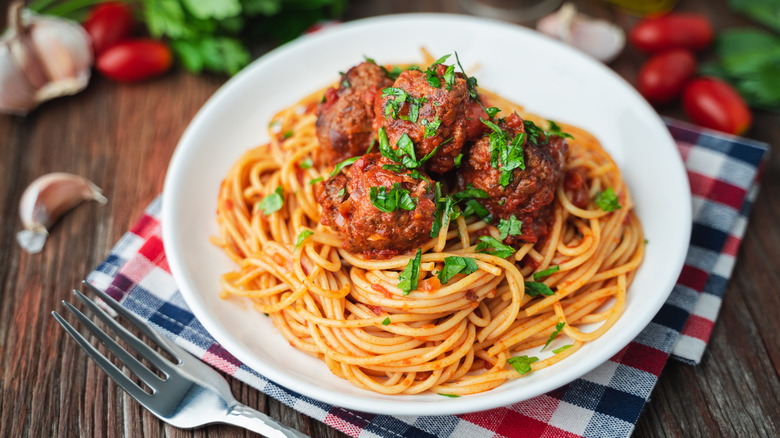What You Don't Realize About Italian Food, According To Giada De Laurentiis
When it comes to Italian-American chefs who have made a name for themselves and their native cuisine, Giada De Laurentiis fits the bill. Known for her hearty pasta dishes, lasagna, pizza, seafood, and many other specialties, De Laurentiis has added her own creative twist to Italian cooking. Born in Rome, De Laurentiis has since integrated numerous influences into her recipes, making it clear that Italian food cannot be defined as a single category. Indeed, it is a combination of regional cuisines, which are each dependent on their geographic position and the neighboring provinces and countries (via Rustico Cooking). While the size of Italy is hardly notable, the abundance of coastline, mountains, lakes, rivers, and its climate makes it impossible to define it as a single landscape.
De Laurentiis remarked to Milk Street that many Americans don't take into account the vast regional differences present in Italian cuisine. While it might not be obvious that a country as comparatively small as Italy would have such significant variations, Rustico Cooking notes that it was split into independent areas from the fall of the Roman Empire until its unification 150 years ago. That's a long time for regions to develop their own specialties and figure out what grows well on their land. Rustico Cooking describes recipes that have barely changed in thousands of years, dishes that have quickly become family traditions, and numerous specialties that can only be found in specific villages.
What about the red sauce?
Variations in landscape entail different climate, agriculture, and animals. As Giada De Laurentiis described to Milk Street, the northern provinces regularly use butter since they have plenty of cows, whereas Southern Italy is filled with olive trees and consequently uses far more olive oil. Try suggesting to the average spaghetti and meatball, red-and-white checkered tablecloth lover that butter is an important component in many Italian dishes and they might laugh in your face.
While an Italian up north will be quick to jump in and say their cuisine is vastly distinct from Southern Italy's, anyone eating Italian food in the U.S. will see similar dishes on repeat, (often boasting the quintessential red sauce) and classify them as Italian food. Besides the fact that many of these dishes are fusions of Italian and American food and ingredients, The Cut indicates they are often more skewed towards Central or Southern Italian cuisine, due to the origins of many immigrants. The outlet explains that as immigrants settled into their lives in the U.S., they were able to afford more and began combining their own traditions with those of other Italian immigrants.
Whether you continue to happily dig into a plate of spaghetti and meatballs with a side of garlic bread or choose to try your hand at some lesser-known recipes, be sure to keep an open mind if you have the chance to make it to Italy and try the regional dishes.

